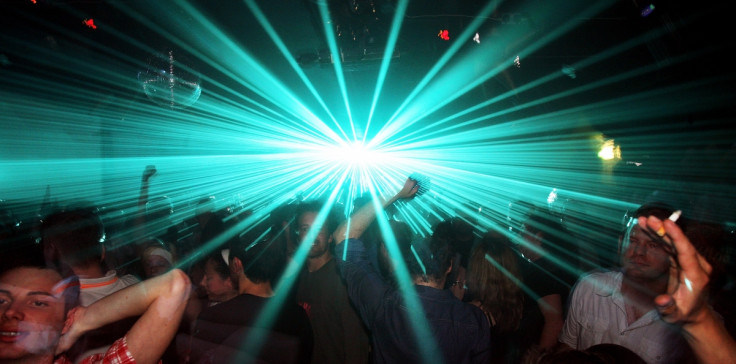Sasha Shulgin, the 'Godfather of Ecstasy' Takes His Final Trip - Death

Alexander "Sasha" Shulgin, the chemist and pharmacologist known for creating hundreds of psychoactive drugs and popularising MDMA, has died at his home aged 88.
Shulgin, known as the Godfather of Ecstasy, died from liver cancer, having already been suffering a spate of ill health down the years, including a stroke and the early stages of dementia.
His wife, Ann, confirmed the news of Facebook, adding his death "was graceful, with almost no struggle at all".
He was known for creating hundreds of psychoactive drugs from his home-based lab in California, which he referred to as "The Farm".
After creating and synthesising the drugs, he would personally test them himself, as well as giving them to friends, before noting down the results in various books and papers.
Shulgin is also known for helping popularise the drug MDMA, first with psychologists and then with recreational users.
Early Career
Shulgin's interest in chemistry began at an early age. He studied organic chemistry at Harvard University at the age of 16, before dropping out to join the Navy in 1943.
It was during his time he also developed an interest in psychopharmacology – the scientific study of the effects of drugs on mood and behaviour.
Shulgin was given a glass of orange juice which he assumed contained narcotics, and soon fell asleep. When he woke, he discovered there was no drugs in the drink and from then on was fascinated with the placebo effect on the human mind.
After the war, he completed a PhD in biochemistry at the University of California, Berkeley, as well as a post-doctorate work in psychiatry and pharmacology at University of California in San Francisco.
He also briefly worked as a research director at BioRad before going on to work as a senior research chemist at Dow Chemical.
By 1965, Shulgin set up his laboratory at his house in Berkeley, California in order to study psychiatry and pharmacology, where he would go on to create hundreds of drugs.
Psychoactive Drugs
The first psychedelic experience Shulgin had was with Mescaline in 1960. After talking the drug for the first time, he wrote: "I understood that our entire universe is contained in the mind and the spirit. We may choose not to find access to it, we may even deny its existence, but it is indeed there inside us, and there are chemicals that can catalyse its availability.''
I feel absolutely clean inside, and there is nothing but pure euphoria. I have never felt so great or believed this to be possible.
It was this moment which helped to shape his future research and career. He would go onto personally test hundreds of his own creations in his lab, even enlisting a small group of friends to help with the research.
The results of the tests can be seen in two books he co-authored with his wife: PiHKAL – or Phenethylamines I have Known and Loved - and TiHKAL, which stands for Tryptamines I Have Known and Loved. Both were self-published in 1991 and 1997 respectively.
Shulgin's interest in MDMA began in 1965, when he first synthesised his own version of the long forgotten drug, which had been originally patented in 1912.
Unusually, he did not experiment with the drug himself, and only took it for the first time 11 years later after the effects were described to him by an undergrad at San Francisco State University
He passed the drug on to his friend and psychologist friend Leo Zeff, who was so impressed with it he came out of retirement to introduce the substance to hundreds of other psychologists as an aide to psychotherapy and talk therapy.
In 1978, Shulgin and chemist David Nichols published the first paper outlining the positive effect of MDMA on humans.
According to George Greer, a psychiatrist who in the early 80s conducted MDMA therapy sessions with 80 patients, ''Without exception, every therapist who I talked to or even heard of, every therapist who gave MDMA to a patient, was highly impressed by the results" reported the New York Times in a feature about Shulgin.
Thanks to Shulgin's original paper, medical studies on the positive effects of MDMA are still being carried out to this day, with clinical trials showing it has the potential to be used as treatment for anxiety and post-traumatic stress disorder (PTSD).
Soon, the drug became popular with recreational users, hitting the clubs of New York and Chicago before hitting UK shores.
MDMA and ecstasy were fundamental to the rave and acid house scene in the UK in the late 1980s and early 1990s.
One of the biggest and most influential sub-cultures the UK has ever seen, rave and acid house culture dramatically altered the lifestyle and habits of an entire generation - the E Generation - as well as changing the British club scene forever.
Ecstasy was seen as seen as the perfect complement to the house and dance music played at clubs such as the Hacienda in Manchester, as well as illegal raves which cropped up across the country. The feeling of euphoria which came with taking drugs at these nights led to the period between 1988 and 1989 becoming known as the Second Summer of Love.

Described by American psychologist Timothy Leary as "one of the century's most important scientists", Shulgin died at his home "surrounded by family and caretakers and Buddhist meditation music".
In an article for Time Magaine in 2002, he said: "Drugs don't do things. They only catalyse what's already there. No drug has skill. It's you who has skill. You only have to know it."
© Copyright IBTimes 2025. All rights reserved.






















